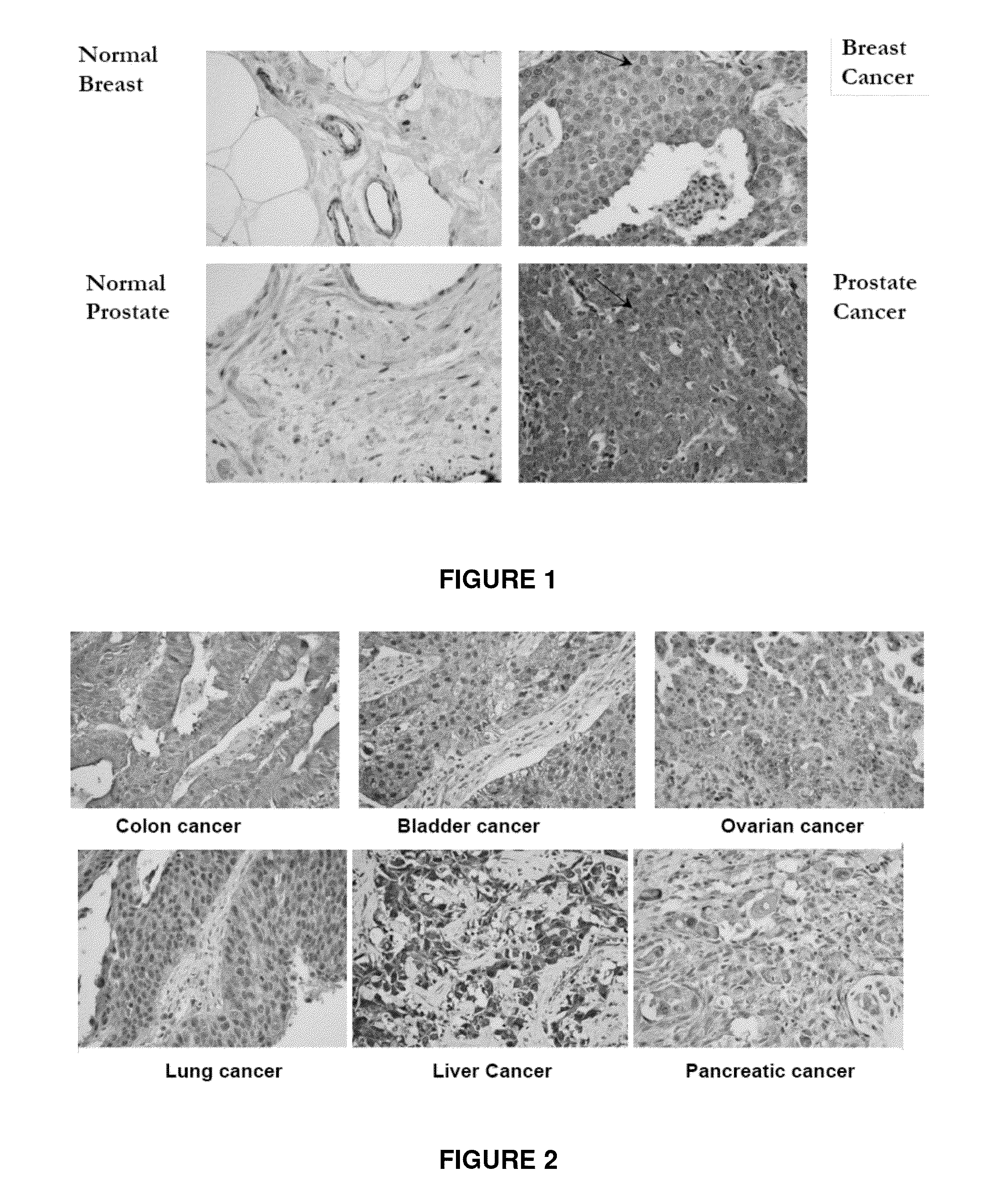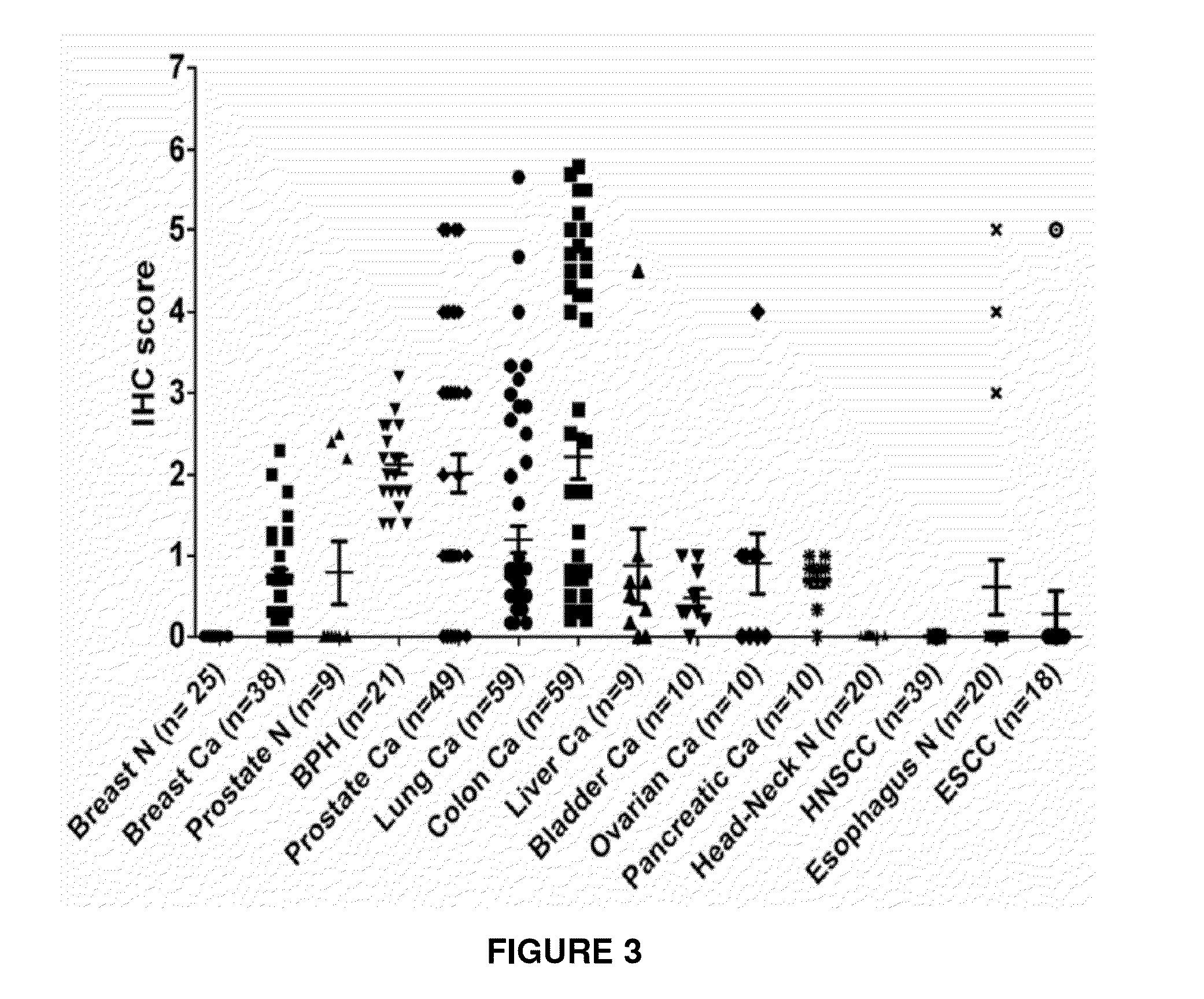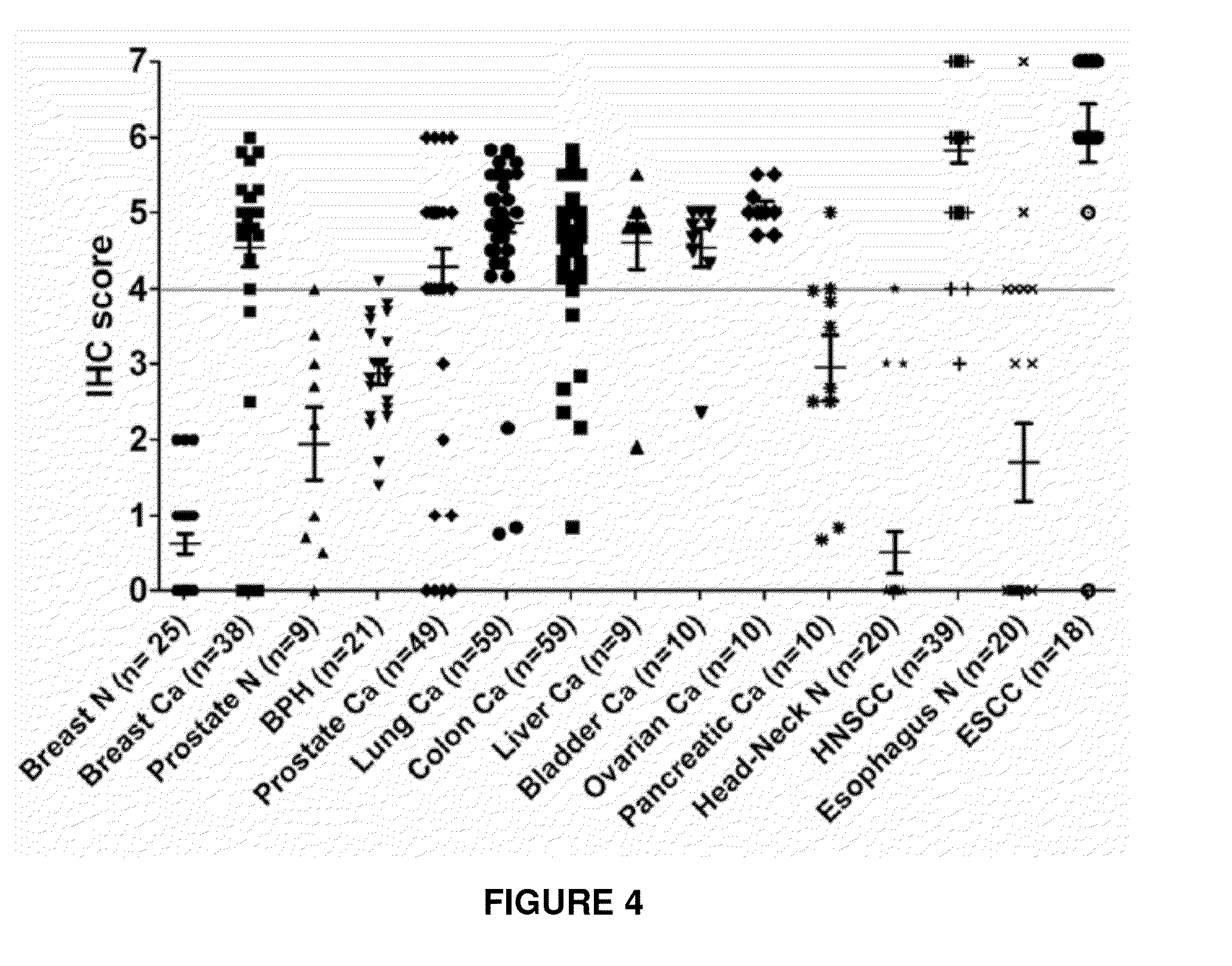Methods for the diagnosis or prognosis of breast cancer
a breast cancer and prognosis technology, applied in the field of epithelial cancers, can solve the problems of insufficient reflection of increased epcam expression, inability to predict the response of treatment and and inability to determine the prognostic relevance of ep-icd in these cancers. achieve the effect of predominantly cytoplasmic ep-icd
- Summary
- Abstract
- Description
- Claims
- Application Information
AI Technical Summary
Benefits of technology
Problems solved by technology
Method used
Image
Examples
example 1
Immunohistochemical Analysis of Epithelial Cancer Markers
[0313]The following materials and methods were employed in the study described in this example:
[0314]Antibodies
[0315]Anti-human-EpCAM mouse monoclonal antibody MOC-31 (AbD Serotec, Oxford, UK, Raleigh, N.C.) recognizes an extracellular component (EpEx-EGF1 domain-aa 27-59) in the amino-terminal region of EpCAM [Myklebust et al, Cancer Res. 1993 Aug. 15; 53(16):3784-8.]. Anti-human rabbit monoclonal antibody, α-Ep-ICD antibody 1144 (Epitomics, Burlingame, Calif.) recognizes the cytoplasmic domain of human EpCAM. β-catenin antibody was raised against aa 571-781 of β-catenin (Cat. #610154, B D Sciences, San Jose, Calif.).
[0316]Immunohistochemistry for EpEx and ED-ICD Expression in Epithelial Cancers
[0317]Serial epithelial cancer tissue sections (4 μm thickness) were deparaffinized, hydrated in xylene and graded alcohol series. The slides were treated with 0.3% H2O2 at room temperature for 30 minutes to block the endogenous peroxi...
example 2
Nuclear Ep-ICD Accumulation can be Used to Predict Aggressive Clinical Course in Early Stage Breast Cancer Patients
[0331]Methods
[0332]Patient and Tumor Specimens
[0333]This retrospective study of biomarkers using the breast cancer patients' tissue blocks stored in the archives of the Department of Pathology and Laboratory Medicine and their anonymized clinical data was approved by the Mount Sinai Hospital Research Ethics Board, Toronto, Canada. The patient cohort consisted of 266 breast cancer patients treated at Mount Sinai Hospital (MSH) between 2000 and 2007. The series consisted of patients who had mastectomy or lumpectomy.
[0334]Inclusion criteria: Breast cancer tissue samples of patients that had up to 60 months follow-up with or without an adverse clinical event; availability of clinical, pathological and treatment data in the clinical database.
[0335]Exclusion criteria: Breast cancer tissues were not considered for this study if patient follow-up data were not available in the ...
PUM
| Property | Measurement | Unit |
|---|---|---|
| Tm | aaaaa | aaaaa |
| temperature | aaaaa | aaaaa |
| temperature | aaaaa | aaaaa |
Abstract
Description
Claims
Application Information
 Login to View More
Login to View More - R&D
- Intellectual Property
- Life Sciences
- Materials
- Tech Scout
- Unparalleled Data Quality
- Higher Quality Content
- 60% Fewer Hallucinations
Browse by: Latest US Patents, China's latest patents, Technical Efficacy Thesaurus, Application Domain, Technology Topic, Popular Technical Reports.
© 2025 PatSnap. All rights reserved.Legal|Privacy policy|Modern Slavery Act Transparency Statement|Sitemap|About US| Contact US: help@patsnap.com



